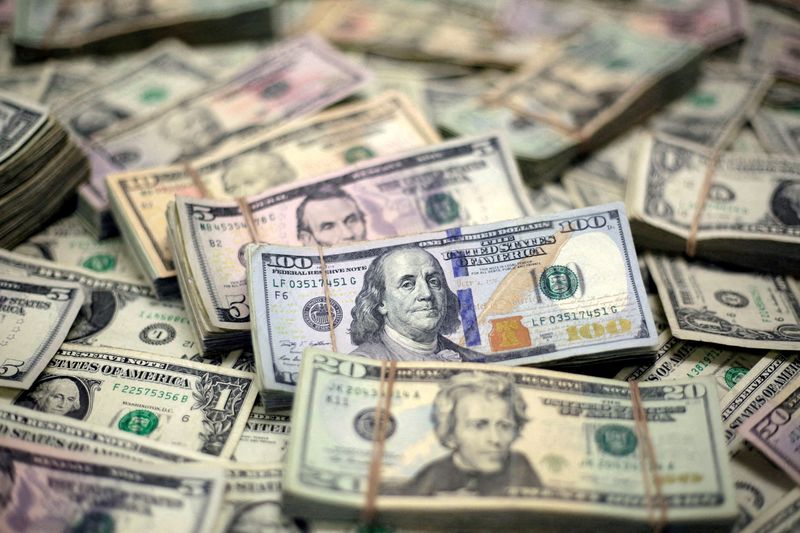The U.S. dollar is likely to maintain its recent strength in the coming months, supported by robust economic data and diminishing expectations for Federal Reserve interest rate cuts, as identified in a recent Reuters poll. Analysts attribute a significant part of the dollar’s approximately 4% rally in October to speculation regarding the results of the upcoming presidential election on November 5. However, the resilience of the U.S. economy, particularly in consumer spending and labor statistics, is considered a primary factor driving this momentum. With recent opinion polls indicating a tight race between Democratic Vice President Kamala Harris and Republican candidate Donald Trump, the market appears to be factoring in a heightened Fed funds rate at the year’s end, contrasting with estimates made just a month earlier. Despite expectations for two additional quarter-point reductions this year, the dollar’s momentum is assumed to be sustained, especially given the more aggressive anticipated rate cuts from Fed counterparts such as the European Central Bank.
The underlying sentiment among analysts suggests the dollar will trend upwards as the election approaches but may experience slight reversals post-election. Dan Tobon, the head of G10 FX strategy at Citi, noted the correlation between improving economic data in the U.S. and a more hawkish Federal Reserve outlook, juxtaposed with weaker economic indicators in Europe that compel a dovish stance from the ECB. Tobon foresees the dollar maintaining its rally into the election, after which it may fluctuate within a defined range. Current market expectations predict that the euro will stabilize around $1.09 by the end of November, with a gradual increase to $1.10 over the following three months despite skepticism about its performance depending on the election outcome.
Interestingly, a significant majority of forex strategists polled by Reuters believes that a Trump victory would elicit a stronger dollar response, forecasting a further gain of 1.5%. In contrast, a Harris presidency could lead to a 1% dip in the dollar’s value. This disparity is primarily attributed to potential differences in trade and tariff policies between the two candidates. Bank of America FX strategist Alex Cohen highlights the asymmetric risk to the dollar, suggesting that Trump’s administration could engender inflationary pressures and alter trade relations more dramatically than Harris’s policies, thus fostering a stronger dollar outlook.
Both candidates’ proposed policies could contribute to rising price pressures; however, many economists predict that Trump’s policies overall might be more inflationary. This aligns with sentiments from a separate Reuters survey, where the majority of economists indicated that Trump’s approach could lead to higher inflation rates. Looking ahead, the median forecasts indicate a gradual appreciation of the euro, projected to rise to $1.11 by the end of April and $1.12 within a year, despite concerns over the dollar’s potential continued strength.
The overarching consensus among analysts is that while the dollar currently displays strong fundamentals, contingent on robust economic data, its trajectory may alter as the political landscape evolves post-election. Bank of America’s Cohen remarked on the potential for the dollar to trade negatively in a soft landing scenario, but acknowledged that recent data from the U.S. presents additional upside risks to such outlooks. As the implications of the election and the Federal Reserve’s monetary policy play out, analysts will closely monitor these developments for their impact on currency valuations.
In summary, while the U.S. dollar enjoys significant support due to favorable economic conditions and interest rate dynamics, the impending presidential election adds an extra layer of complexity to the forecast. The contrasting approaches of the candidates may shape market perceptions and currency performance in ways that require careful consideration. The interplay between economic indicators, Federal Reserve policies, and electoral outcomes will ultimately dictate the dollar’s path forward amid evolving domestic and international market conditions.

